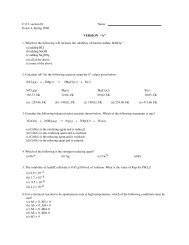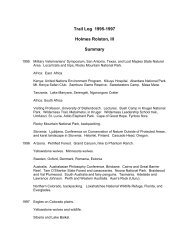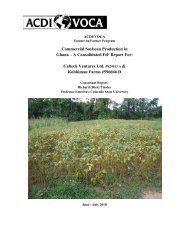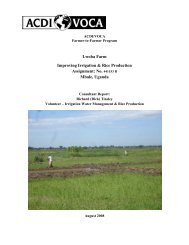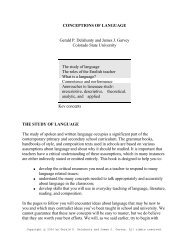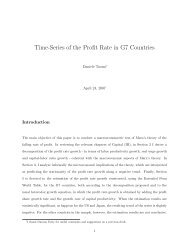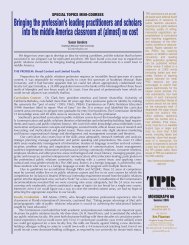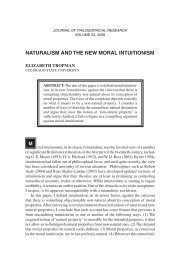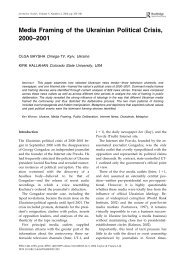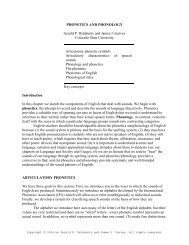Geha Foods Evaluation of Irrigation for Processed Tomatoes
Geha Foods Evaluation of Irrigation for Processed Tomatoes
Geha Foods Evaluation of Irrigation for Processed Tomatoes
Create successful ePaper yourself
Turn your PDF publications into a flip-book with our unique Google optimized e-Paper software.
Local Crop Husbandry<br />
Production Practices<br />
One concern I had in listening to some <strong>of</strong> the discussion around the <strong>of</strong>fice is the possible<br />
desire to make the tomato production process too complex. It has to be noted that crop<br />
husbandry tends to be very provincial so that what is best management in one area may not<br />
be suitable <strong>for</strong> other areas. The differences could be substantial, possibly in the range <strong>of</strong> 30%<br />
and not be easily explained, if at all. Also, most “best management practices” are based on<br />
the potential <strong>of</strong> the physical environment. It is then left to the user to sort this down to the<br />
economic optimal based on cost benefits estimates, and then the operational optimum based<br />
on the availability <strong>of</strong> labor, etc. This latter restriction is <strong>of</strong>ten overlooked but the best<br />
example might be the comparison between the <strong>Geha</strong> garden and the tomato plots on the<br />
various contract farms. The <strong>Geha</strong> garden definitely looks much better than the farms, but if<br />
you look at the ratio <strong>of</strong> area to labor I think you will see the <strong>Geha</strong> garden has a much higher<br />
labor input to keep it well manicured. It is questionable if the extra labor <strong>Geha</strong> is using is<br />
really economic <strong>for</strong> the contract farmers to commit, relative to their other commitments.<br />
Thus while it is good to evaluate how tomatoes are produced in other areas, the starting point<br />
is what is being done in Tajikistan and congenially negotiate how to modify the management,<br />
and not just attempt to impose it. Again, the example might come from the <strong>Geha</strong> Garden<br />
where the workers planted maize in the tomato rows, presumably to provide shade (shadow)<br />
<strong>for</strong> the tomatoes and reduce sun burn (Fig. 28). Similarly, they took the weeds and covered<br />
the tomatoes with them, again presumably to provide shade and reduce sunburn (Fig. 29).<br />
Both practices are unknown to me from other locations, kind <strong>of</strong> cute, and were not used on<br />
the various contract farms. However, they should not be summarily discarded, but casually<br />
evaluated and at least partly kept to make certain the local knowledge and experience <strong>of</strong><br />
workers did not have some merit, as <strong>of</strong>ten is the case.<br />
Fig. 28. Maize Plants Intercropped into tomato thought to<br />
provide shade and reduce sunburn on the tomatoes.<br />
31



